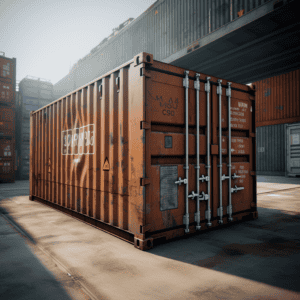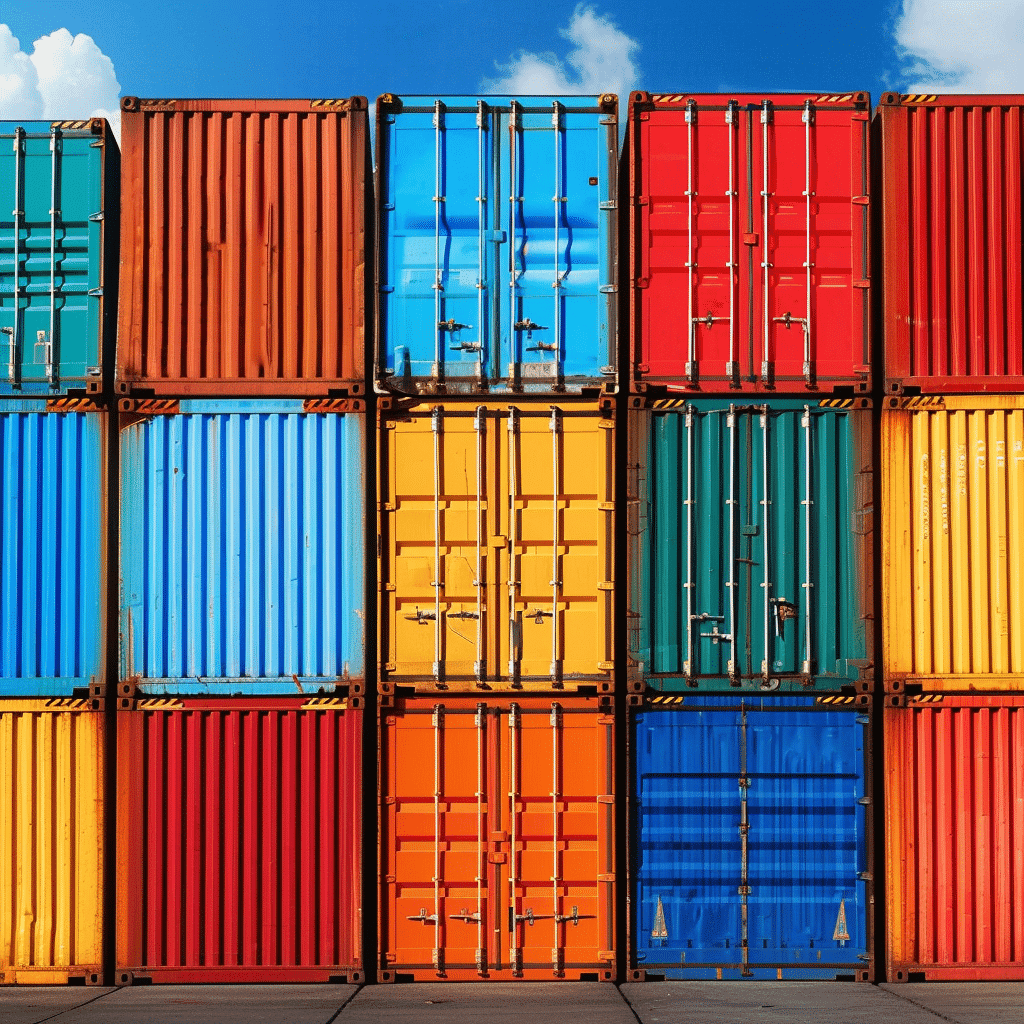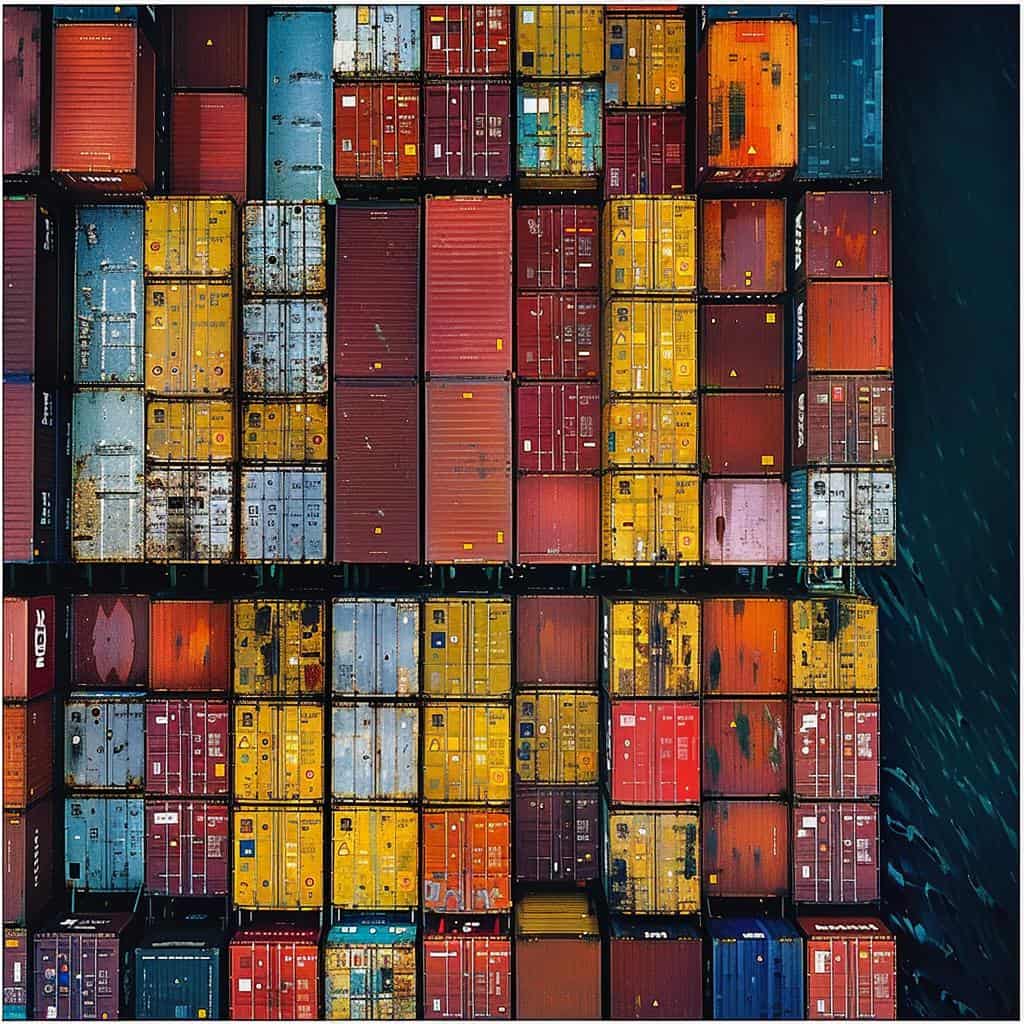In today’s interconnected world, the shipping container stands as a testament to the marvels of modern logistics. These large metal boxes, often seen stacked on cargo ships or freight trains, have not only revolutionized the way we transport cargo overseas but have also found innovative uses in various sectors. One question that often arises is, “how much is a used shipping container?”
The answer, as you might expect, varies based on several factors. Companies like Valtran.com have been at the forefront, offering quality shipping containers and equipment directly to customers, ensuring they receive the best value for their money.
Introduction to Shipping Containers
Originating in the mid-20th century, shipping containers transformed global trade. Before their inception, goods were loaded individually onto ships, a tedious and labor-intensive task. With standardized shipping containers, this process became streamlined, enhancing the efficiency of transporting cargo overseas. As globalization accelerated, the shipping container emerged as a symbol of international commerce.
Today, the cost of a used shipping container can range from $2,000 to $5,000, influenced by factors like size, age, condition, and location. Valtran.com, a leader in the shipping container industry, offers diverse container options, ensuring customers receive optimal value.
Container Sizes and Types
Shipping containers, available in various sizes, cater to distinct cargo needs. The used 20ft and used 40ft shipping containers for sale are the most prevalent. A 20ft container, suitable for smaller consignments, might cost between $2,000 to $3,000. In contrast, the larger 40ft container, accommodating bulkier shipments, can range from $3,500 to $5,000.
Beyond these, high cube containers provide extra height, ideal for taller items. Their cost, like other containers, is influenced by their size and specifications. Before investing, it’s vital to assess specific requirements to ensure cost-effective decisions.
Cost Factors and Pricing
Delving into the details of shipping container pricing, various elements dictate the cost. Age is pivotal; a brand-new container will invariably be pricier than a used shipping container. However, the container’s condition can significantly sway its price. A well-maintained used container might command a price close to newer ones, while those with evident wear might be more affordable.
Geographical location also impacts the cost. For instance, containers in regions distant from major ports locations might have added delivery fees. Valtran.com, with its extensive industry experience, offers competitive prices, ensuring customers get the best deals.
Condition and Age of Containers
The allure of purchasing a used shipping container often lies in its cost-effectiveness. However, it’s paramount to ensure that the cost savings don’t come at the expense of quality. The condition of a used storage container is often directly proportional to its age. A container that’s been in use for several years might exhibit signs of wear, such as rust patches, dents, or even compromised structural elements. Containers that still hold the “cargo worthy” certification are generally in a condition fit for transporting goods.
However, those without this certification, while cheaper, might only be suitable for stationary storage purposes. It’s always prudent to conduct a thorough physical inspection of a used container before finalizing a purchase. Alternatively, partnering with reputable suppliers like Valtran.com can alleviate concerns about quality, as they are known for their stringent quality checks and high standards.
Renting vs. Purchasing Containers
The dilemma of whether to rent or purchase a shipping container often boils down to the duration and nature of one’s needs. For businesses or individuals with short-term requirements, such as a temporary storage solution during a move or extra storage space for a one-off event, renting becomes the most cost-effective choice.
Renting a container allows for flexibility, ensuring you only pay for the duration you need, without the long-term commitment. Moreover, renters are often free from the responsibilities of maintenance, as the rental company typically handles wear and tear.
On the other hand, purchasing a container becomes a wise investment for long-term projects or continuous needs. For instance, businesses that frequently ship goods might find that owning a container saves money in the long run. Additionally, ownership provides the freedom to customize the container to specific requirements, be it branding or structural modifications.
However, with ownership comes the responsibility of paying for periodic upkeep to ensure the container remains in optimal condition. Companies like Valtran.com recognize the diverse needs of their clientele, offering both rental and purchasing options. Their competitive pricing and flexible terms ensure that whether you’re renting or buying new containers, you’re getting the best deal.

Modifications, Customizations, and Delivery
Shipping containers, in their basic form, are designed for transporting cargo. However, the potential for customization is vast. From trendy new shipping containers to container homes to pop-up retail spaces or even mobile offices, the possibilities are endless. Such modifications, while enhancing the functionality of the container, can add to its cost. Installing insulation, windows, electrical fittings, or even plumbing can escalate the price based on the complexity of the modifications.
Delivery is another crucial aspect to consider when budgeting for a container. Delivery fees can vary significantly based on the container’s size, weight, and the distance to the delivery location. For instance, delivering to a remote area or a location with challenging terrain might incur additional costs. It’s also essential to factor in potential crane or equipment fees if the delivery site isn’t easily accessible. Before committing, always request a detailed cost breakdown, ensuring there are no hidden charges.
Safety, Quality, and Maintenance
When it comes to shipping containers, safety and quality are paramount. Whether used for storage or transport, a container must be watertight, ensuring the contents remain dry and protected from external elements. Checking for signs of rust, especially at the joints and corners, is crucial as rust can compromise the container’s structural integrity. Containers should also be wind and rodent-proof, ensuring maximum protection for the contents inside.
Maintenance plays a pivotal role in prolonging a container’s lifespan. Regular checks for wear and tear, addressing issues like dents or rust spots promptly, can keep a container in serviceable condition for years. When in the market for a container, always prioritize quality. Opting for a slightly pricier but high-quality container can save money and potential headaches in the long run. Companies like Valtran.com, known for their stringent quality checks and high standards, ensure that customers receive containers that meet the highest safety and quality benchmarks.
Environmental and Sustainability Aspects
In an era where environmental concerns are at the forefront of global discussions, the repurposing of used shipping containers stands as a testament to sustainable innovation. These once cargo-carrying containers are now being transformed into eco-friendly structures, reducing the carbon footprint associated with new construction materials. By reusing used containers themselves, we’re not only conserving resources but also reducing waste that might otherwise end up in landfills.
The architectural world has embraced this trend, with many designers championing the use of containers for their durability and versatility. From constructing energy-efficient homes with solar panels to creating green office spaces with natural ventilation, the possibilities are endless. This sustainable approach not only champions the cause of recycling but also introduces a unique, industrial aesthetic that’s both modern and environmentally conscious.
Innovative Uses of Shipping Containers
The versatility of shipping containers has transcended their traditional role in cargo transport. Entrepreneurs, designers, and innovators are continuously finding novel ways to repurpose these steel structures. Trendy cafes with industrial vibes, art galleries in urban settings, and even luxurious swimming pools have been crafted from containers.
One of the most notable trends is the rise of shipping container homes. These homes, often modular in design, offer a blend of sustainability, affordability, and style. They can be quickly assembled, reducing construction time, and can be customized to suit individual preferences. With the added benefit of being eco-friendly, it’s no wonder that container homes are becoming a sought-after alternative to traditional housing.
Technical Specifications and Standards
When venturing into the world of shipping containers, a thorough understanding of their technical specifications is paramount. This encompasses knowledge of the container’s dimensions, ensuring it fits the intended space or purpose. The material quality, often corrosion-resistant steel, determines its durability and lifespan.
Additionally, certifications like the CSC (Container Safety Convention) plate indicate that the container is fit for international transport. Especially for businesses involved in transporting cargo overseas, ensuring that the container adheres to international standards and safety regulations is non-negotiable. It guarantees the safe and efficient transport of goods, minimizing potential risks.
Legal and Regulatory Considerations
Navigating the legal landscape associated with shipping containers can be intricate. Depending on their intended use, different regulations come into play. For instance, transforming a container into a residential space might require adherence to local zoning laws and obtaining building permits.
If the container is intended for shipping purposes, it must comply with international shipping regulations and standards. Moreover, considerations like weight limits, labeling requirements, and even environmental regulations might apply to storage containers. Before embarking on any project involving a container, it’s prudent to consult with legal experts or professionals familiar with container regulations. This ensures that all endeavors are compliant, avoiding potential legal hurdles down the line.
Economic Implications
The shipping container industry is intricately woven into the fabric of the global economy. As a cornerstone of international trade, the dynamics of this industry can serve as a barometer for broader economic trends. Factors such as oil prices, geopolitical tensions, and changes in international trade agreements can have ripple effects on shipping container prices.
For instance, tariffs or trade embargoes can lead to a surplus of containers in one region and a deficit in another, influencing local prices. Additionally, economic booms or recessions can impact the demand for containers, further affecting their cost. For businesses and individuals involved in international trade or looking to invest in containers, staying abreast of global economic trends is crucial. An informed approach can lead to cost savings and strategic purchasing decisions, maximizing returns on investment.
Future Trends and Predictions
The shipping industry, like many sectors, is on the cusp of a technological revolution. As we move towards a more connected and sustainable future, innovations in container technology are inevitable. We can anticipate the rise of smart containers equipped with IoT (Internet of Things) devices, allowing for real-time tracking, temperature monitoring, and even automated inventory management. This not only enhances efficiency but also ensures the safety and integrity of the cargo.
Furthermore, as the world gravitates towards sustainability, the use of eco-friendly materials in container construction and the development of energy-efficient transport methods will gain prominence in shipping container costs. These advancements, coupled with evolving trade dynamics, paint a promising picture for the future of the shipping container industry.
Safety and Security Measures
In the realm of shipping, the safety and security of cargo are of paramount importance. Containers, as is the primary mode of transport for goods, must adhere to stringent safety standards. This encompasses measures like ensuring containers are adequately anchored during transport to prevent shifting, which can lead to damage or accidents.
The use of tamper-proof seals is essential to deter unauthorized access and potential theft. Additionally, ensuring that containers are watertight and weatherproof is crucial, especially when transporting sensitive or perishable goods. These measures, while seemingly basic, are foundational in ensuring the safe and secure transport of goods across the globe.
Community and Social Aspects
Beyond the realms of trade and commerce, shipping containers are finding a place in community and social projects. Their modular nature and durability make them ideal for various community-driven initiatives. Urban areas, grappling with space constraints, are turning to containers for creating community gardens, promoting urban farming and sustainability.
Similarly, containers are being repurposed into community centers, libraries, and even schools in regions with infrastructure challenges. Their adaptability, coupled with the potential for sustainable and cost-effective construction, makes them a favorite for such endeavors.
Tips and Recommendations
Venturing into the world of shipping containers, whether for business or personal use, requires a well-informed approach. It’s imperative to conduct thorough research, understanding the nuances of shipping container cost, types, sizes, and potential uses. Comparing prices across suppliers, while keeping an eye on global economic trends, can lead to cost-effective purchases.
However, price should not overshadow quality. Investing in a high-quality container ensures durability and safety, offering long-term value. Reputable companies like Valtran.com, with years of industry experience and a commitment to quality, can be invaluable partners in this journey. Their expertise and competitive pricing ensure that customers receive top-tier products and services, maximizing their investment.
Conclusion
In the vast and dynamic world of global trade, shipping containers stand as silent yet indispensable pillars. Their versatility, durability, and adaptability have made them integral to various sectors, from commerce to community projects. As we’ve explored, the cost of a used shipping container can vary based on numerous factors, including size, condition, age, and location.
On average, a used shipping container can range from $2,000 to $5,000, offering a cost-effective solution for diverse needs. Whether you’re venturing into international trade, embarking on a sustainable construction project, or simply seeking a robust storage solution, understanding the intricacies of shipping containers is invaluable. As with any investment, thorough research, prioritizing quality, and staying informed about global supply side trends can ensure you make the most of your purchase.


